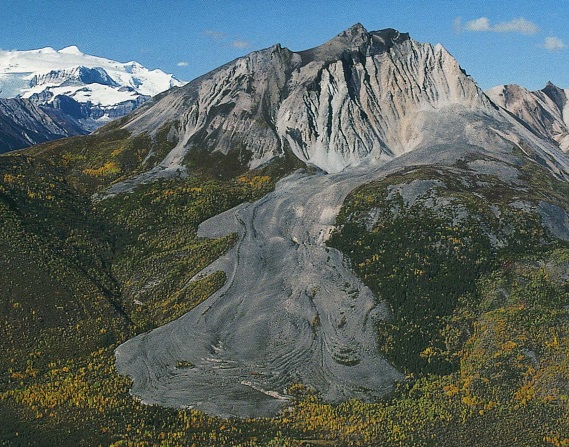
NPS Photo
Rock glaciers may not look like glaciers at all at first sight: That is because they are often mantled with a thick layer of rock and debris. This rock and debris shields them from ablation (melting), which means they can persist in areas where meltrates might be too high to sustain large alpine glaciers. For this reason, they can be found in many parks with high mountains in the contiguous United States.
What the actual flowing ice in a rock glacier looks like and how these glaciers form in the first place is subject to debate. Some scientists think that the ice is likely very similar to that of other glaciers and the main difference between them is that rock glaciers are covered in rocks at the surface. Others think they probably have high concentrations of rocks throughout and that the ice just binds these rocks together, creating a mass that can flow downslope like a glacier. Either way, rock glaciers are flowing masses, and they form distinct lobes that look much like other kinds of glaciers.
Find Your Park: Which Parks Have Rock Glaciers?
- Alaska Public Lands, Alaska [Park Home]
- Gates Of The Arctic National Park and Preserve, Alaska [Geodiversity Atlas] [Park Home]
- Glacier National Park, Montana [Geodiversity Atlas] [Park Home]
- Grand Teton National Park, Wyoming [Geodiversity Atlas] [Park Home]
- Great Basin National Park, Nevada [Geodiversity Atlas] [Park Home]
- Lake Clark National Park and Preserve, Alaska [Geodiversity Atlas] [Park Home]
- Rocky Mountain National Park, Colorado [Geodiversity Atlas] [Park Home]
- Sequoia and Kings Canyon National Parks, California [Geodiversity Atlas] [Park Home]
- Wrangell - St. Elias National Park and Preserve, Alaska [Geodiversity Atlas] [Park Home]
- Yosemite National Park, California [Geodiversity Atlas] [Park Home]
To learn more about glaciers, glacier features, and glacial landforms, see the Glaciers & Glacial Landforms Page.
Part of a series of articles titled Types of Glaciers.
Previous: Tidewater and Freshwater Glaciers
Tags
Last updated: February 9, 2018
